Digital Hearing Aids
Looking treatment for hearing loss? Find the best hearing machines available in the market. Learn about various styles and types of wireless digital hearing aids. Choose the one that’s right for you.
The very first step in the journey is to hear better. We are in the business of improving lives with the digital hearing machine. To make sure you get the best possible care, we work with the best hearing healthcare professionals all over India. They will help you identify the right hearing aids, that fit your lifestyle and needs. So don’t wait. Start your journey today only to better hearing!
Types of Hearing Aids - Find The One That's Right For You
Invisible In The Canal (IIC)
IIC are the tiniest form of hearing machines that fit very deeply in the ear canal. Their size not only makes them comfortable but also invisible in the sense that it is hard to make out whether a person is wearing them or not. These are designed specifically for moderate or mild hearing loss. People these days prefer the tiniest aids and it won’t be wrong to call them the finest finished product of today’s age.
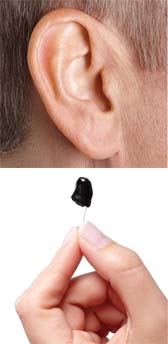
Completely In The Canal (CIC)
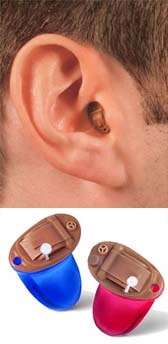
CIC are slightly bigger than the invisible aids but are nearly invisible. A small cord is used to insert and remove. They are suitable for mild to moderate hearing loss and showcase high cosmetic appeal as its find to spot them when worn. CIC fits completely within the ear canal. Only the tip part of a small plastic “handle” visible outside the canal, which is mainly used to insert and remove.
In The Canal (ITC)
ITC is visibly larger in size than IIC and CIC and even have longer battery life. They are fitted partly or completely into the ear canal. They have an upper hand features like directional microphones. They tend to work better in noisy places and are lightweight, medium size hence easy to insert & remove. They are appropriate for mild to moderate hearing loss and are popularly denoted as Mini ITC ear machines.
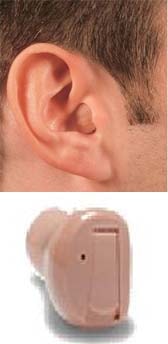
Full Shell Or In The Ear (ITE)
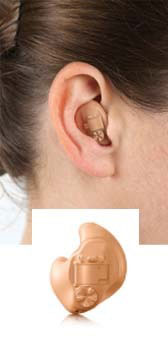
Full Shell or In The Ear comfortably fit in external ear and is suitable for all type of hearing loss. These devices can be equipped with external switches and directional microphones and have the largest battery life. They are larger than the ITC and CIC aids and cover the outer area of the ear. Its convenient controls make it an appropriate choice for people of all ages, younger generation in particular.
Behind-the-Ear
BTE aids are connected to the custom earpiece place inside the ear canal through a clear plastic audible tube. These are suitable for almost all ages, from an elderly person to a child. They include the speaker and microphone behind or on top of the outer ear, with tubing that routes sounds down into the ear. These types are easily adjustable and have simple buttons to control volume and change program settings that suit your surroundings.
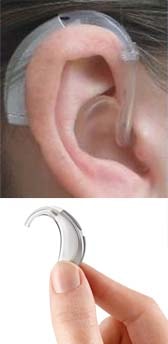
Mini BTE with slim tube and tip
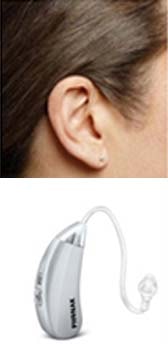
Mini BTE aids have extra thin tubing to carefully direct sound into the ear and have the most powerful sound processing technology. They are most suitable for mild to moderate hearing loss severity and are available in a superpower, standard, mini, or micro sizes with wireless options. It can be fitted with both standard or custom ear molds. It offers the best technology in a relatively smaller, and exceedingly stylish package.
Receiver in Canal (RIC)
Receiver-in-canal or RIC hearing instruments are worn behind the ear and come with tiny housings because their receiver sits directly in the ear canal. The so-called mini receivers come in different sizes for different levels of amplification. RICs can be quickly adjusted and provide a high degree of appropriate amplification. In this feedback isn’t much of a problem because the microphone and receiver are not put in the same container.
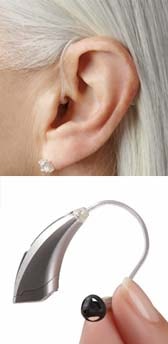
Receiver in the Ear (RITE)
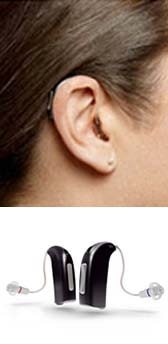
RITE Hearing Machines let an individual forget that they are even wearing aids. It is a two-piece system, which fits easily either behind or on top of the ear and a thin, separate wire connects it to a mini receiver in the ear canal. Therefore, it is a very comfortable choice for todays age. They are fully automatic in nature. All the user don’t have to worry about turning them on and off whenever necessary. At HearingSol we offer them in a variety of colors and price range.
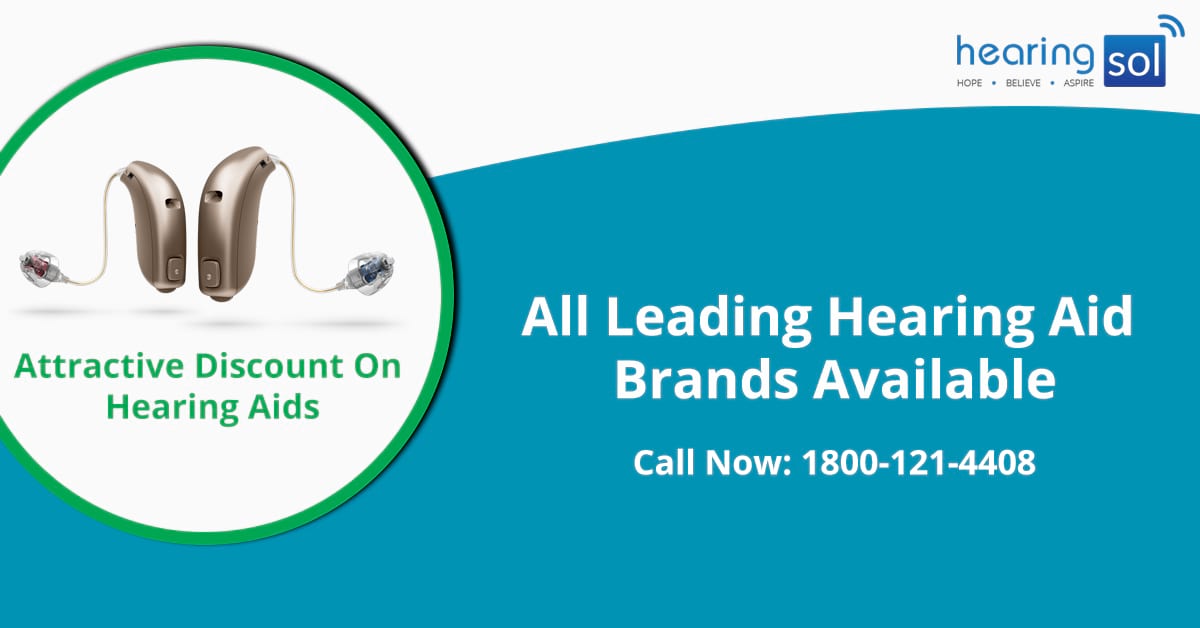
Everything You Need To Know About Hearing Aids
What Are Hearing Aids?

Digital Hearing Aids are small, comfortable, and easy to use. They amplify sound very well. For many people ear machines are the best option to correct untreated hearing loss and continue a high quality life. Today’s hearing device are tiny, there are so many options available to suit every lifestyle, budget and preference.
The technology for ear device has improved a lot in the past years. Now, they reduces background noise while picking up the sounds of the person speaking to you directly.
Latest technologies make it possible for modern hearing devices to match the loss, physical features & lifestyles. You should always concern your health professionals to find the one good for you.
We will help you learn about various styles, types, features, technologies available in the digital hearing technology.
What Are The Benefits Of Ear Machines?
Digital technology enables us to create effective solutions for a wide range of hearing difficulties and customize the solution to your specific requirements. The digital hearing device can benefit by improving the quality of your life, allowing you to recognize and boost speech over background noise and automatically adjust their volume depending on the environment you’re in.
Our sleek, lightweight these ear machine can be fitted comfortably in or behind your ears and can be matched to your hair color or skin tone so that you can carry on living your life to its fullest. They provide a number of benefit including improved communication and decreased listening effort with the proper fitting process.
The best part is that you can be connected with your friend and the important people in your life without any hesitation. So here are some top benefits of curing hearing loss with these devices.
- It doesn’t restore things back to normal but it improves significantly. It increases your safety.
- Treating hearing loss with a hearing device may slow the cognitive decline.
- It makes things easier. There is no need for any announcement or to repeat the conversation.
- Improve your physical well being at a social gathering
- It able to increase social contacts and can do better in the job
- It helps to get better mental health
- You can easily find the source of sound (localization)
If you think you may benefit from hearing machines, but haven’t book an appointment, make it today only. Your hearing professional will help you through each step of the process and make it easy and worthy to hear all the sounds around you once again.
How Do Digital Hearing Machines Work? How They Help?
Hearing aids simply collect the sound near you, process it and release it back to the ear within no time. These are of types: analogue and digital. We will discuss them in detail in the later part of the page. Most of the ear machines consist of 5 basic components that are.
Microphones: It picks up the sound wave in the air & transforms them into electrical signals.
Microchip: This is a computer chip located inside the hearing aid. These are customized by the expert audiologist as per your needs. The sounds are analyzed by the processing chip.
An amplifier: Processed sounds are sent to the amplifier. The amplifier increases the power of the signal it receives from the microphone.
Receiver: The amplified sounds are sent to the loudspeaker. The receiver or speaker converts the digital signal into vibration which passes through the inner ear to the brain. The sounds are transmitted by the loudspeaker into the inner ear, via tubing in an earmold in the ear canal, or through a thin wire to a receiver in the ear.
In the inner ear, the sounds are transformed into electrical impulses and impulses are picked up by the brain where they are processed.
A battery: All these processes need the power to operate. The battery provides that power to machines.
History of Hearing Aids: From Trumpets To Digital Advanced Technology
If you read the history of hearing aid, it started hundreds of years ago. The first attempt to correct the sign of hearing impairment has been in existence since the very first person to cup their hand behind the ear. But since then, the technology has gone better at light speed.
In the early 13th to 19th century, people start using animal horns to the modern ear trumpets till the 18th century. The funnel shape cone worked by collecting sound energy and amplify them. These were the only way to improve the ability to hear until electricity and the telephone were invented.
Thanks to Thomas Alwa Edition who was also suffering from hearing loss, invented the first carbon transmitter for the telephone. This device was capable of amplifying the electrical signal and increase its decibel level to 15 dB.
Sound pressure is measured in dB & an average human needs 30 dB to hear properly. Hence carbon hearing amplifier was not as effective and used until the use of vacuum technology.
In early 1920, people start using vacuum technology to enhance the dB level to 70dB. It was effective, but the issue was size. The size of the vacuum tubes was so large that it was unportable.
People were still waiting for the small, compatible device which can fit discreetly in the ear. After the invention of the transistor (1942), it was Norman Krim who realize the opportunity to use this technology in hearing machines. By 1952, he was able to make such a ear apmlifier which was smaller and can be placed completely inside the ear.
It was a huge success and soon decreases the use of vacuum tube. By the time passes, companies start developing analog hearing machines in a more efficient way. Digital processing chips were introduced in the 1980s which control the amplification.
In 1996, the first modern digital hearing aid was introduced. Then after two decades have passed & technology has reached to a new horizon. Now everything can be programmed, customized as per hearer needs. As the mobile phone has become a smartphone, so is for smart hearing aids. They can adapt to the environment, connect with electronic devices. Multiple features have been added such as Bluetooth, FM etc.
Yes, we have come a long way from the days of ear trumpets, and ear aids continue to develop as technology advances. Most of the them are smart, adapting to different listening solutions without the interference of the user. Long-wearing ear devices, which can stay in the wearer’s ear canal for many weeks, has been available for several years.
Surely in future, hearing machines will continue to increase in perfromance and ease while decreasing in size.
Difference Between Analog And Digital Hearing Aids: Brief Comparison
All ear machines work the same way at the simplest level. Each of them contains a amplifier, microphone, speaker, and battery. The microphone pick up sound in the environment, the amplifier adjusts the signal, and the speaker delivers the louder sound to the ear.
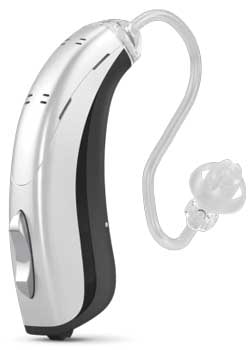
Analogs hearing aids simply make continuous sound waves louder. They capture sounds, amplify and transmit them. Firstly you need to understand the history of analog vs digital and the alternative ways that they process and amplify sounds. These were the first to come into existence. After the evolution of the latest technology, digital hearing apmlifier also start its journey.
Currently, most (90%) of the hearing machines sold in the US, India and all around the world are digital. Although analog continue to be sold because they are often lower priced, and also because some people prefer them. Both have similar components. Both types of devices pick up sound using a microphone and use circuits to amplify it.
They both run on batteries and use a receiver to deliver sound into the ear. The difference between analog and digital hearing aid is the type of technology that is used to amplify sounds.
- It is less costly than digital technology devices.
- Used advanced technology to improve the sound.
- Longtime users sometimes prefer analog over digital.
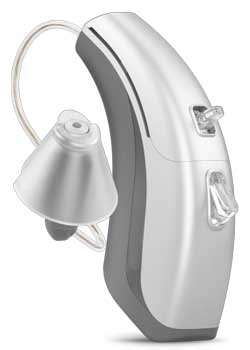
What makes Digital Ear Machines advanced from analog is that they do more than just capturing the sound itself. It’s a new feature to help to differentiate between noise and background noise. This means they can process, filter and adjust for distortion before they pass the signal in to your ear.
Nowadays, most people suffering from hearing loss prefer to use such digital devices. It generally contains more adaptable program settings and can be adjusted to meet the more specific hearing loss requirements of some users.
The best advantage of digital hearing amplifier is that they are self-adjusting. Due to its digital processing, it allows more flexibility in programming the aid. Thus, the sound it transmits matches every individual’s specific degree of hearing loss. Cost-wise, digital ear machines cost a little higher than analog.
However, some reduced-feature digital ear aids are now in the same general price range. It is recommended to have patience and give yourself time to get used to the whatever device you are using and the sound it produces.
Advantages of digital hearing aids:
- Program improvement help reduce background noise
- Most flexible and adjustable for specific user needs
- Change to optimal settings for different listening environments
- Noise Reduction and Speech Recognition
- Better accuracy in fitting
If you are not sure which hearing aids are better for your hearing, talk to your hearing concern today. They can help you to decide on a model that fits your needs and budget. Remember, to get the most out of any ear machines , you need both the technology and the proficiency in programming from hearing professional.
Hearing Aid Brands - The Top Manufacturers On The Market
Is brand-name important to you? People compare products on the basis of brand, quality, price, features etc. Every product you buy there is a brand behind this. Do you know, who are the top reputable brands & manufacture in hearing aid industry?
There are a lot of brands out there, with companies behind them trying to promote their brand as “the best”. If you are thinking about buying a hearing aid, its good. But before that, you should do a bit of research to find the one which suits you the most. Consulting our hearing professional will help you choose the best option for you.
Some of the brands manufacturing all types of Ear Machines and has been in the industry for a long time are:
Phonak Hearing Aids
Starkey Hearing Aids
Widex Hearing Aids
Siemens Hearing Aids
Resound Hearing Aids
How Much Do Hearing Aids Cost?
Ear Machine prices depend on the level of technology present. So, how to know what type of hearing aids to choose? There are basically two main factors – power and technology. People need hearing devices with enough power to match their level of hearing impairment.
If you are looking for the best quality cheap hearing aids according to your need and budget. There are more than 1000 different type of hearing machine available so the exact price is difficult to find. They can be organized into three main list – premium, mid-range and basic. Below is the brief information about hearing amplifiers price range whether it is premium, mid-range or basic, all our hearing device are digital and provide great quality sound.
Premium Hearing Aids
These hearing devices range from Rs. 1,50,000 to Rs. 3,00,000. Premium ear aids offer the best innovation for your ears! The intense innovation in these types grabs speech the best and replicates discussions in perfectly clear sound. These gadgets can manage even the most troublesome hearing circumstances. You can easily communicate with your friends at the neighborhood restaurant even with the presence of loud noise of other people’s conversations. The premium gadgets are high, but so is their value! These gadgets give you the best experience and service.
Key Features –
- A wide range of colors and styles
- Better 360o spatial orientation
- Adjusted automatically to the listening environment
- Multi-media application, wireless streaming
Mid Range Hearing Aids
These hearing type cost between Rs. 50,000 to Rs. 1,50,000. They incorporate innovative elements to build hearing comfort. The “directional hearing” component guarantees that sound sources are confined and their position is thought about in the ear machines reproduction. A few devices likewise playback TV or mobile phones sound directly.
Key Features –
- Wireless connectivity
- Enhancement & Speech identification
- Effortless directional hearing
Basic Hearing Aids
The basic hearing range extends between Rs. 20,000 to Rs. 50,000. These devices identify speech in calmer settings and offer feedback reduction. Integrated feedback suppression allows great hearing comfort without any whistling sounds. A basic gadget is thus very powerful, particularly in the in case of any user spending a lot of time at home. More active individuals, on the other hand, will require a more modern gadget.
Key Features –
- Latest digital technology
- Low feedback
- Multiple adjustable hearing programs
Hearing Aid Batteries
While there are rechargeable or long-life disposable batteries available on the market, the most common type is still the zinc-air button disposable battery because zinc-air batteries are air-activated. Once exposed from the back of the battery, oxygen will connect with the zinc-air battery.
For the best performance from a zinc-air battery, wait for a minute after removing the sticker to activate fully before placing it in hearing device. The zinc-air batteries remain stable for up to 3 years when stored in room temperature. Storing them in the fridge has no benefits and can cause condensation to form under the sticker, which could decrease battery life early.
Modern hearing aid battery is referred to by their number or color of the packing. These batteries all run from 1.35 to 1.45 volts. Hearing machines battery types with color and number:
| Color code/ Type | Dimensions | Frequently Uses |
|---|---|---|
| Blue(#675) | 11.6 mm × 5.4 mm | Used in Behind-The-Ear (BTE) hearing aids, battery life line longer approx 300 hrs |
| Yellow (#10) | 5.8 mm × 3.6 mm | Used in CICs, RICs and battery lifespan is shorter, approximately 80 hours. |
| Brown (#312) | 7.9 mm × 3.6 mm | Used in mini BTEs, RICs, ITCs and generally hold a charge approximately 175 hours |
| Orange (#13) | 7.9 mm × 5.4 mm | Used in BTEs, ITEs and average battery lifespan of 240 hours |
Learn How To Clean & Do Maintenance of Your Hearing Aid
Once hearing health professionals recommended hearing machine for you now this is your responsibility to take care and maintain your hearing device. In every aid, there is certain care and maintenance are required to be sure that money is being well spent and the product is well kept. Regular cleaning that you can do yourself, combined with routine maintenance i.e. provided by your hearing professional will give you years of reliable better hearing. While there is much certain maintenance item that only the professional should use, but there are other many protection required in regularly so that your hearing device is well-maintained and functioning at its full capacity. So following are some tips for hearing aid care –
- Turn off your ear machines before going to sleep.
- Pick a proper tool for regular cleaning.
- Keep your device away from heat and water.
- Clean it on a daily basis.
- Do not wipe onto the microphone port
- Do not try to lubricate its parts.
- Keep it out of the reach of children and pets!
- Always choose correct size of battery for your hearing devices
Ear machines should be cleaned professionally daily as recommended by your hearing professional. They have vaccums with specialised attachments that gently suck wax from hard to reach areas. If your are not sure how to properly clean or if you feel your device need special attention, ask your hearing professional today!
Consideration Before Buying Hearing Aid
Hearing loss is the third most common constant problem that is affecting more than 48 million people. Yet more than 85% of people can get benefit from using a hearing aid but they do not actually use them. It is happening because of cost or lack of approach to hearing health professionals.
Modern ear machines gets stronger and better every few years as technology improves. With so many types of them available on the market, which one is right for you? The answer depend on many things. The main consideration is the nature of your hearing impairment, its cause, and its severity.
The hearing disorder can affect the individual lifestyle. Before purchasing a hearing aid firstly you should concern with an audiologist. They will provide you with a better suggestion. After that, know about the features and other extra benefits, warranty and how to use, where it is used, all the prevention and precautions are required to buying it.
Good health is the most precious possession, so act now and enjoy better hearing with us. The hearing professionals focus eagerly on your needs to help find the perfect solution for you. Call us today on +91-9327901950 and book your appointment.
